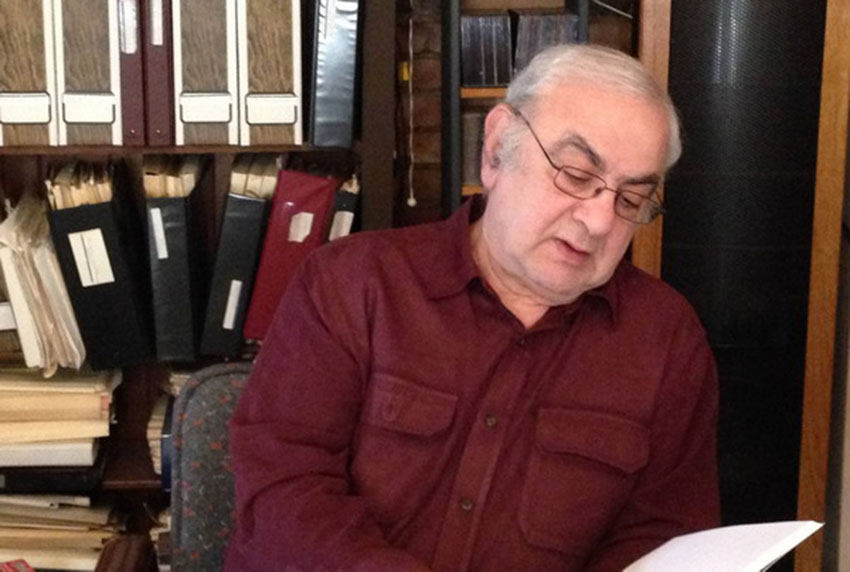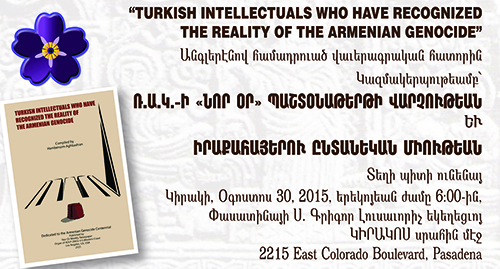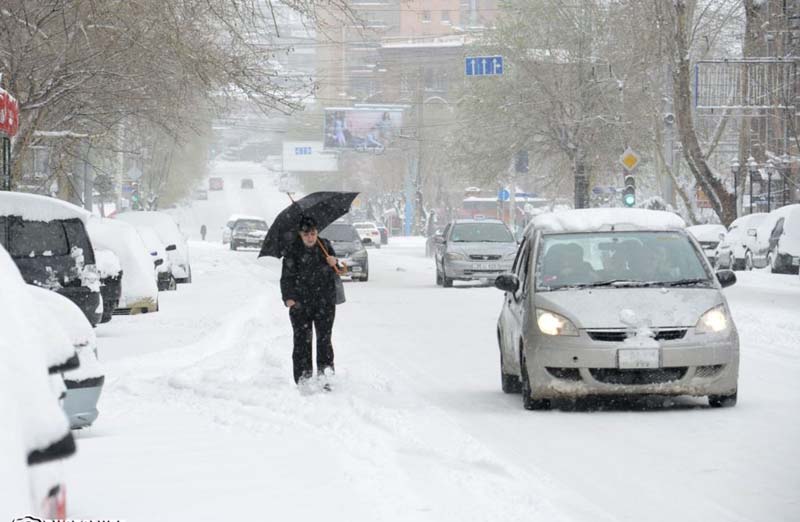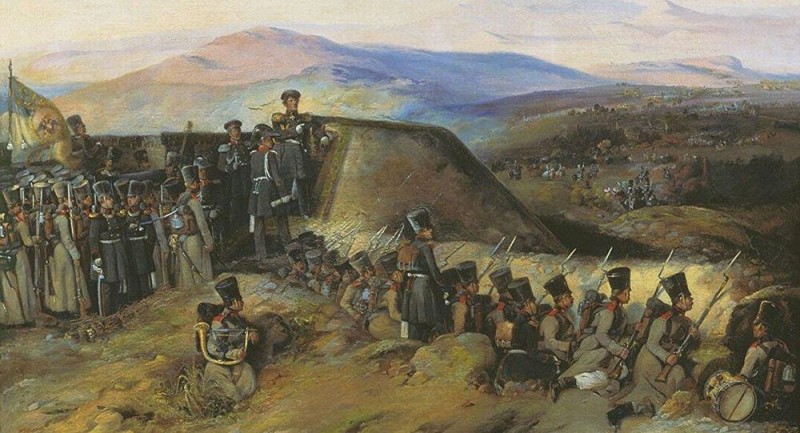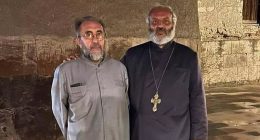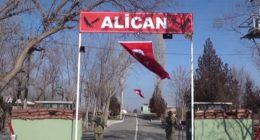The meeting of June 1997 regarding the resolution of the Karabakh conflict: A significant correction
JIRAIR LIBARIDIAN
There are moments in our most recent history that, in my opinion, have played a determining role. Some participants in such moments have even forgotten about them. Others, if they remember them, do so in their own way: either in very vague terms or adjusted to their current political requirements.
The present conjunction is important, if not critical, for Armenia and Nagorno Karabakh. Some political figures are making attempts to make comparisons with the most recent times and to “learn lessons from history.” These attempts are often fruitless, and usually senseless. On occasion they are also harmful. When the political figure constructs history in accordance with his need to justify his current political actions, around a memory adjusted to today’s needs; when the political figure predetermines what lessons he will be drawing then it is the exigency of the moment that determines history and not history that determines the lesson. It is doubtful that such mental exercises are useful to anyone except to that particular figure, ideology or political party.
Consequently I find it necessary to speak about an event, which may be one of the most important indicators of recent history and for the current situation; it may even inspire some “lessons.” Until now I have been reluctant to publish this material. First because I have long been working on a book that contains accounts of this and similar moments. Second, because it did not seem to me that doing so was necessary. But taking into consideration occasionally the many valuable statements and more often the garbage presented by political figures with the confidence of a historian, I think the time to speak about this event has come.
It is not my purpose to insist that we were better than our leaders and diplomats today. The purpose here is to inform the public of an event important for our most recent history of 25 years. This is the story of a an important meeting that took place in 1997 to remind again that what was possible as a resolution of the Karabakh conflict almost 20 years ago was probably impossible in 2005, and what was possible in 2005 seems impossible to obtain today. Is it possible the solutions based on the Madridian principles and its variants too become impossible soon? And what will be possible in five years or tomorrow morning if we don’t reconsider our way of thinking, if we do not introduce significant changes in our calculations and modus operandi. The issue is not the fighting soldiers, the national spirit, or our vital interests.
The issue is not even our Diaspora that has been brought in the calculations as a counterweight to the Azerbaijani oil and gas. The issue is the possibilities of resolving our problem and the relevance of regional and international relations for those possibilities. The issue also relates to the possibilities of our diplomacy, which produce the best results when with domestically joint efforts we seek a positive solution to a real problem.
I am publishing my recollections of a meeting that took place in the summer of 1997 that are based on the detailed notes I took immediately after that meeting. As interesting and important as the pre-history of that meeting may be, I do not consider it necessary to present it here in full. That will be done in the book.
Brief Background
The OSCE December 1996 summit in Lisbon was followed by a proposal from the Minsk Group. The three co-chairmen of the group presented their main proposal in May 29-31, 1997 during their visit to the region. They returned to the region on June 12-13, to offer a new version of the proposal since NK had rejected the first draft.
The May 1997 proposal was based on the principle of a package deal, because both Stepanakert and Baku had insisted for a long time on such a solution; each thought that it would be to their advantage. That is, each was trying to extract the most out of the situation. Of the parties to the conflict it was Yerevan only that thought the parties should not go after the impossible and that the conflict should be resolved within the realm of possibilities, on the basis of a step-by-step approach, thus extracting both Karabakh and Armenia from the dangerous status quo. Yerevan also argued that the status offered in the package deal was not offering independence to Karabakh.
In general Yerevan adopted the following approach with regard to the negotiations: not to reject summarily the proposals presented by the international mediators, to accept them as bases for negotiations, but to present the mediators well-founded rejections or reservations regarding any approach, concrete paragraph or formulation before the start of negotiations. Nagorno Karabakh felt more comfortable rejecting without any hesitation any proposal presented by the Minsk Group. Still, the document presented after the Lisbon Summit differed from all previous ones, because it was based on the package deal principle, which is what Stepanakert and Baku had been demanding. And now Stepanakert was seriously concerned with the content of that proposal. The Karabakh leadership was set to reject this proposal too without any afterthought. But that leadership was seriously concerned that Yerevan’s usual approach could have grave consequences this time around and beginning on June 8 entered into substantive negotiations with Yerevan to find a solution.
Leaving aside the prehistory of this meeting beginning on June 8, here I tell about the story of the main event, the meeting of June 14. If I am not mistaken, the Karabakh leaders called in the morning of June 14th to communicate their wish to meet urgently with the leadership of Armenia and that the leaders were ready to get to Yerevan that same afternoon and have that meeting.
Based on my notes and my memory I reconstruct here that meeting in as much detail as possible and necessary. Let me state that this meeting held a special place in my memory; and the more time passed, the more I sensed its significance.
The Meeting
The meeting was held near the small swimming pool within the governmental compound. Nagorno Karabakh (NK) was represented by Leonard Petrossyan, Prime Minister of NK and Acting President (since NK president Robert Kocharyan had been asked to serve as Prime Minister of Armenia and new presidential elections there had not yet occurred); Arkadi Ghukasyan, Minister of Foreign Affairs of NK and slated to be the next President of NK; and, Samvel Papayan, NK Defense Minister. On the part of the Republic of Armenia (RoA) present were the President of the Republic, Levon Ter-Petrossyan; President of the RoA National Assembly Babken Ararktsyan; RoA Prime Minister Robert Kocharyan; Vazgen Sargsyan, Defense Minister of the RoA; State Security Minister of RoA Serzh Sargsyan, I am quite certain Armenia’s Minister of Foreign Affairs Alexander Arzumanyan; and myself as the RoA President’s senior advisor, secretary of the RoA Security Council, and negotiator.
It is possible to say that this was a joint meeting of the security Councils of NK and RoA; it was also an informal meeting. Absent was RoA president’s Chief of Staff, Shahen Karamanoukyan, which explains the absence of a formal record of the meeting.
The President of the RoA opened the meeting by asking the NK leadership to present the reason for requesting this meeting. No one from the NK leadership responded. Ter-Petrossyan repeated his question, reminding that it was the NK leaders who had requested the meeting. Still no response. To facilitate their work, Ter-Petrossyan said roughly the following: Since the issue is obviously related to the NK conflict and more precisely to the latest Minsk Group proposal, allow me to present our options and the probable consequences of each of these options, and then we can discuss what we do. (Here he presented five scenarios, which, in essence, were the same as those he would later incorporate in his October article “War or Peace? The time to get serious.”) His presentation included the analysis of the package deal and step-by step approaches. At the end he asked the NK leaders to react to his analysis.
The first to speak was Leonard Petrossyan, who was sitting across from Ter-Petrossyan in that group of ten in a near circle. Kocharyan and Papayan were to the left of Petrossyan, Ghukasyan to his right. Leonard announced that the full cast of NK leaders had examined the situation and reached the conclusion that it was necessary to adopt the step-by-step approach that the package deal had not delivered what they had wanted.
Ter-Petrossyan was dumbfounded. For the first time the NK leadership had reached the conclusion Armenia had, and it had done so through its internal processes. Ter-Petrossyan asked that Leonard repeat his statement. Leonard did so, following which Ter-Petrossyan asked that Ghukasyan and Papayan express their views independently from Petrossyan. Ghukasyan and Papayan confirmed Leonard’s position. Ter-Petrossyan looked around to see if everyone else had realized what he had witnessed.
Subsequently RoA president continued speaking, and said. “Now let’s all understand what we mean by a step-by-step solution. We would be returning 6 of the 7 districts under Armenian control that are not part of the Autonomous Region of NK, and we keep Lachin. NK would preserve all of its military capabilities. The maximum of security measures for NK would apply to the territories that are returned both from the military and political points of view. The war would end; we would be signing a peace treaty with Azerbaijan. The question of the final status of NK would be left to a second stage of negotiations. That is, we are returning territories to obtain peace and not status.”
Ter-Petrossyan asked the NK leaders if, in fact, that is what they understood by the step-by-step approach. All three answered in the positive. Ter-Petrossyan then turned to the others and asked: “Do you all understand what happened here? This is the first time since the cease-fire that NK and RoA are in full agreement regarding the resolution of the conflict. We are proceeding with the step-by-step approach and we all understand what that means. Is there anyone here who does not agree with this process?” He asked whether anyone disagrees with this solution two, may be three times.
No one raised an objection, except for Papayan who, at the end asked hesitantly: Can’t we keep Kelbajar as well? He was standing already and leaning on the back of Kocharyan’s chair. Kocharyan turned around (he could not look at Samvel directly, that would have required a 180 degree turn), and said, “Are you an ass or something, we have not even digested Lachin yet and now you want Kelbajar too?”
Ter-Petrossyan interrupted. “One minute, Robert.” He turned to me and asked: “Jirair, do you think you can also keep Kelbajar in your negotiations?” “I am not sure,” I said, “I can try. Until now we were working with the 6+1 formula when we thought of the step-by-step approach. We are returning 6, keeping one. I am not sure we can change that to 5+2. But we may be able to reach the 5+1+1 formula. We return 5, keep one, and keep another ‘temporarily’, we see what happens afterward.”
“Is this answer satisfactory to you, Samo?” asked Ter-Petrossyan. “If Jirair is saying that, then it is,” answered the NK Defense Minister with a smile. The President turned back to me. “Considering the basis laid down here, how long do you think until you can bring a peace treaty? Are three to four weeks enough?” “I don’t think so, Mr. President, we should have four to six weeks in mind.”
That ended that part of the meeting. I went to my room and started working on a draft treaty that we could provide the Minsk Group unofficially and confidentially, which, based on the step-by-step approach, could then be turned into the basis of a new OSCE proposal. I will not detail here what followed but I will present some observations.
Observations
A text was prepared, much labor was exerted in important capitals and vast political capital was spent in that process on the basis of the principles summarized by the RoA president. After all, Stepanakert and Yerevan had reached the same conclusion independently of each other. It was the text based on the conclusions of this meeting in Yerevan that constituted the basis of the 1997 September OSCE proposal that Ter-Petrossyan accepted as the basis for negotiations. Elements of the text we prepared were subjected, of course, to changes introduced by the Minsk Group co-chairmen conforming to the logic of their own internal negotiations, as a result of which the final proposal included points, which were either objectionable or unacceptable to us. While accepting the September 1997 document as only the basis for negotiations, Yerevan also presented the OSCE a well-argued paper that listed the points, which, from its point of view, would have to be subject to negotiation.
Still, in its essence the September 1997 proposal corresponded to the principles clarified by the president during the June 14, 1997 meeting. Those were principles agreed to by the NK leadership, principles against which no member of the RoA leadership objected. It was the principles that later Kocharyan, Vazgen Sargsyan and eventually Serzh Sargsyan rejected. Later the three insisted on a package deal resolution, a position that led to Ter-Petrossyan’s resignation.
How can we interpret these developments and what lessons can be drawn from the behavior of the actors and the mediators. I leave these to the judgment of the readers and historians. Today my purpose is to present the fact before it disappears for any reason. Two of the ten participants of that meeting, Vazgen and Leonard, are no longer with us; they were assassinated. The others may have forgotten about the meeting, wittingly or unwittingly; it is also possible that this meeting was not as important to them. As far as I know, none have written and made public statements about it.
Over time we have lost and we are still losing that which we could have obtained. That which is on the table today, whether in the form of the Madridian principles or any of its successors or any Russian inspired document, is not better than the proposal of September 1997. To suggest otherwise constitutes either an attempt to save the name of those commentators or willful political blindness. Without even getting into all the details, it is clear that in the September 1997 proposal, we were keeping full control of the whole of the Lachin district. In case the negotiations on that proposal were successfully completed, the OSCE as well as the UN Security Council would have adopted the agreement. Therefore, the UN Security Council but more importantly Armenia would have become a guarantor of that document and the document would have acquired the equivalence of international law. With the September 1997 proposal we were postponing the determination of the status of NK and of Lachin to a later phase of negotiations, meaning that the status quo would remain in those two areas. According to the Madridian principles, only the Lachin corridor would have remained under Armenian control. In successor documents, we would be turning over all of Lachin to some unspecified ‘international’ force; in these documents it is also not clear who would be the guarantor of any agreement and what would be the role of the RoA. Moreover, during the December 1997 Copenhagen OSCE ministerial meeting, the Minsk Group co-chairmen informed us, in writing, that they are prepared to move to the second phase of negotiations the status of the Kelbajar district as well, if that would secure the participation of NK in the process. Thus the only question raised during the June 1997 meeting was also resolved in our favor. But that too did not satisfy the NK leadership. Something to think about.
Equally important is the following point. According to the September 1997 proposal based on the step-by-step approach, a commission composed of representatives of Armenia, NK, and Azerbaijan would have determined the future status of NK. That means NK would have had the right of veto. It would have been NK’s business whether NK’s position was determined by the leadership of NK, its parliament, or trough a referendum. The Madridian and following documents have made references to a possible referendum in NK to determine its status. But the documents have not specified whom that right belongs to, which side understands what by such a referendum, and it is too early to say whether that addition was a good or bad thing. There are also other differences between the Madridian and such documents and the September 1997 document. But this is not the place to engage in them. It was necessary to note the most fundamental ones.
Of course much has changed in the last 20 years. What has not changed is the power of the logic articulated in Ter-Petrossyan’s 1997 article, “Peace or War.” The four-day April 2016 war is a testimony to that logic. Meanwhile in what has changed we should not forget the continuing emigration from Armenia, the absence of a serious and sustained economic growth and other important measurements, which are making ever clearer the logic of that article. No fundamental problem has been resolved in the last 20 years.
There is one question, which I have often raised: Is it important for us to resolve the Karabakh conflict. And, is it possible to resolve it by obtaining what is necessary for us and not what is most desirable, when by insisting on the most desirable we may lose what is necessary.
One last comment. I know that there are those who wished, for different reasons, that I had not released this article. Some of these reasons may also have a legitimate basis. There are those who may think that the publication of such an article, especially at this moment, can harm one process or another, a political figure or another, a political force or another. Without entering into arguments, I can state the following: if our processes are so fragile that they cannot survive one historical, new fact or another, then they were condemned to failure on their own and did not need my help.
Each political actor is responsible for what he/she has done or not done, what he/she has said or not said, especially when any of these circumstances has had an impact on the politics of our country, on its future, on its history and, at the end, on the welfare of its people.
Jirair Libaridian was a Senior advisor to the first president of Armenia, Levon Ter-Petrossian, historian, diplomat, professor of Armenian history

